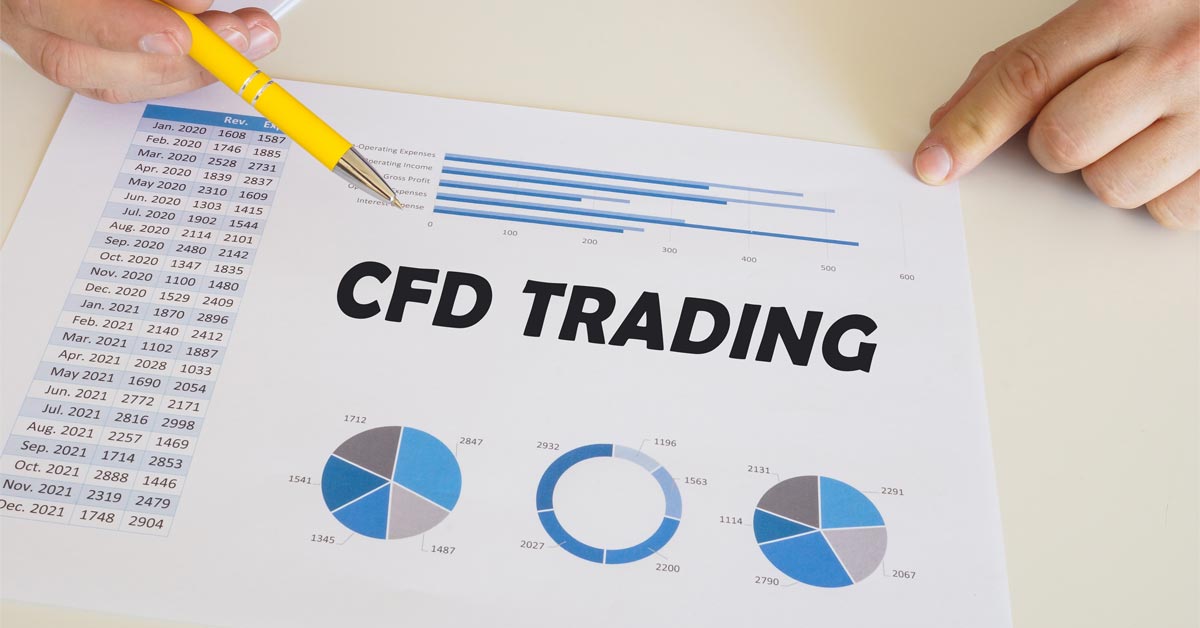Contract for difference (CFD) trading is a sophisticated form of investment that allows individuals to speculate on the rise or fall of global financial markets or instruments. Unlike traditional trading, CFDs enable traders to gain exposure to financial assets without owning the underlying asset. This method is primarily done through derivative financial instruments, which means that traders deal with the price changes of these assets.
Continue reading this article to learn what CFD means, its advantages, and risks.
Essence and Mechanics of CFD Trading
CFD trading involves the exchange of the difference in the value of a financial asset between the opening and closing trades. It offers the flexibility to profit from rising and falling markets by going ‘long’ (buying) if a trader believes market prices will rise or going ‘short’ (selling) if the trader anticipates declining market prices.
Furthermore, understanding several fundamental concepts in CFD trading is crucial for successful market participation. These include:
- Spread and Commission: The spread in CFD trading represents the difference between the buy price and the sell price of an asset, such as commodities, shares, and currencies. A narrower spread signifies less movement needed in the asset price to achieve profitability. On top of the spread, traders may also pay a commission, which is a fee based on the size and type of the transaction, typically in the equity market.
- Deal Size: It refers to the volume of units of the traded asset. The deal size determines the level of exposure to the market. The value of a single CFD depends on the underlying asset, which means traders can choose the deal size that suits their risk tolerance and strategy.
- Duration: Unlike options or futures, CFD contracts are marked by their absence of expiry dates. This flexibility allows traders to close their positions at any chosen time during trading hours, which provides greater control over their trading strategy and exposure.
- Profit and Loss: Profits or losses in CFD trading are calculated by the difference in the price of an asset when the position is opened and when it’s closed. This result is then multiplied by the number of CFD units. Traders must be mindful of leveraging, as it can magnify profits and losses relative to the initial investment.
Understanding these key concepts can help traders navigate the complexities of CFD trading, manage risks effectively, and optimize their trading strategies. However, one might explore CFD trading by checking out reputable online resources or consulting with financial professionals for deeper insight into how CFDs operate.
Advantages of CFD Trading
The following are the advantages of CFD trading:
1. Leverage
CFD trading is known for offering high leverage. This means traders can multiply their exposure to a market with a relatively small amount of the investment’s total value upfront. However, while leverage can magnify profits, it can also amplify losses.
2. Market Access
Traders can access a wide range of markets worldwide from a single platform. This enables trading in global markets from any location and at any time without dealing with traditional exchanges.
3. Flexibility and Hedging
CFDs allow trading against price movements without physically owning the underlying assets. This flexibility enables traders to hedge existing portfolio positions and mitigate potential losses in declining markets.
4. No Stamp Duty
Since CFDs don’t involve purchasing the underlying asset, they’re exempt from stamp duty, which can reduce the cost of trading compared to traditional methods where this tax might apply.
Risks Associated with CFD Trading
Despite the advantages, engaging in CFD trading comes with some risks. These include:
1. Market Risk
Financial markets are volatile, and due to their leverage, market movements can significantly impact trading outcomes, leading to considerable losses.
2. Liquidity Risk
Slippage may occur in some CFD markets due to low liquidity, such that the trade is executed at a price different from expected. This will impact the trading strategy.
3. Leverage Risk
On one hand, leverage can increase the return potential; however, it also exposes traders to a higher risk of loss, which may be greater than their deposits. Thus, traders must be cautious about their exposure to risk.
4. Counterparty Risk
This pertains to the financial soundness of the broker participating in the deal. If a broker goes bankrupt, investors might find it hard to retrieve their investments.
Effective Strategies for CFD Trading
Want to effectively navigate the complexities of CFD trading? Here are some strategies:
- Risk Management: Implement stop-loss and limit orders to protect possible profits. Also, avoid overleveraging. Instead, meticulously evaluate your positions.
- Continuous Learning: This means staying up to date about market conditions. You’ve also got to understand financial markets and the economic factors impacting asset prices.
- Using Demo Accounts: What are these accounts all about? Here, you can practice before actual trades, giving you an idea as to how the market operates. You won’t have to risk real money.
Treat these tactics as your most valuable allies for more favorable trading outcomes.
Conclusion
CFD trading offers considerable advantages. But it can’t be denied that there are considerable risks involved, that can’t just be ignored! So you need to have a deep understanding of market operations. Sound risk management strategies are also a godsend. Continuous education can’t be stressed enough as well if success is what you’re aiming for.
You’ve got to be well-prepared and well-informed and make sure that you only operate within your financial limits. Be all this and you can effectively manage the inherent risks and opportunities in CFD trading.
ⓘ LAFFAZ is not responsible for the content of external sites. Users are required to read and abide by our Terms & Conditions.









